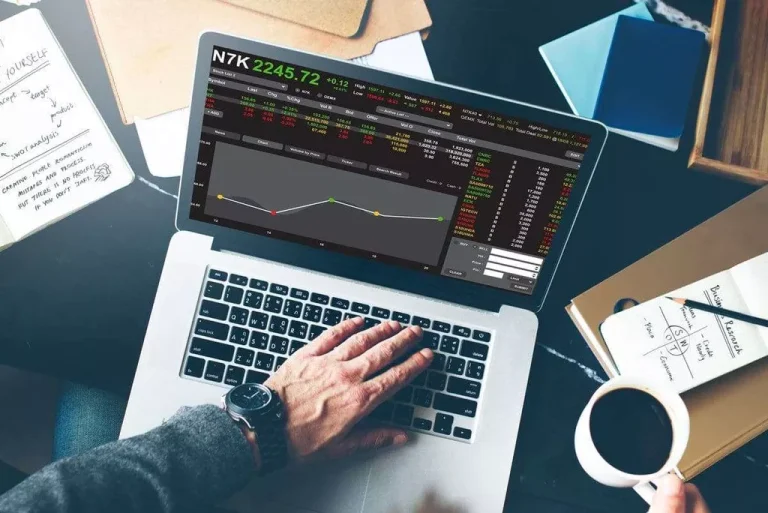For instance, well-liked cryptocurrencies like Bitcoin are extra steady, and subsequently are inclined to have larger liquidity and lower volatility. On the opposite hand, smaller altcoins usually have decrease liquidity and better volatility, resulting in more slippage. Placing restrict orders stands as a extremely efficient method to keep away from slippage. To clarify, a limit order lets you specify a particular buying or selling price you’re happy with. This type of purchase or sell order will only execute when at that particular price. This guarantees the end result you desire, sidestepping any nasty slippage surprises.
In the case of 10 tokens this may not seem a giant drawback, but within the case of large orders, this level of volatility can mean a fantastic lack of money. However, if you would like to automate the calculations, fortunately, the crypto market provides several slippage calculation instruments. You simply enter your parameters, and the slippage calculator takes care of the remainder. Let’s say you purchase or sell orders for $100, with a slippage tolerance of 5%; your order is full only whenever you purchase the shares for no more than $105, as this will be the minimal worth.
Tools
Slippage becomes a problem when market fluctuations are excessive or liquidity is low. That’s why your buying and selling technique should all the time include a slippage check—especially on decentralized platforms. If you place a commerce during a giant move, the worth might shift before your order fills. That results in slippage in crypto—which is usually worse throughout information occasions, token launches, or crashes.
How Slippage Manifests On Centralized Exchanges (cexs)

Crypto slippage refers back to the distinction between the anticipated worth of a crypto buy or promote order and the final value of the order when it’s executed. Cease Losses are also a popular methodology of minimizing potential slippage. Setting a cease loss order restricts the price movement earlier than an order executes. In quick, it won’t let you execute a commerce if the price fluctuates too much. This allows you to take charge of your trades and curtails the chance of serious losses caused by slippage.
Day buying and selling has critical limitations in success for retail traders. Transaction prices in day buying and selling accumulate quickly by way of spreads and platform charges. Setting slippage tolerance places you in management of your crypto trades. Sensible traders set their tolerance at 1% to guard their investments from main price shifts. This small buffer helps your orders go through easily while keeping your cash protected from huge losses. Price slippage can even occur whenever you execute a big order at a chosen value, however there isn’t sufficient liquidity to maintain the present bid/ask unfold.
By breaking down your order into multiple smaller trades, you can scale back the impression of your trades available on the market and avoid depleting the desired value level’s liquidity. This occasion serves as a cautionary tale for all merchants – timing is every thing in the risky world of cryptocurrency. This serves as a prime example of the potential penalties of creating trades in instances of market volatility. Nonetheless, having a low slippage tolerance could mean your transaction is rarely executed and locks you out of revenue from vital price actions. On the opposite hand, should you set your slippage tolerance too excessive you might turn out to be prone to frontrunning. Arguably the best method to scale back slippage is to set limit orders for cryptocurrency trades as an alternative of market https://www.xcritical.com/ orders.
In highly volatile conditions, you may want a higher slippage tolerance for quick and environment friendly execution. Conversely, in more stable market durations, a lower tolerance could lead to extra favorable commerce executions. Adjusting slippage tolerance in accordance with present market circumstances is an important talent.

You may need to drop your value by 5% or extra simply to search out sufficient buyers. As a beginner, you may lose extra money than planned on each commerce. You will first need to discover a reliable and secure cryptocurrency trade platform. As Quickly As you’ve chosen an exchange, you’ll be able to create an account and deposit funds into it.
If you want to follow profitable merchants, you would possibly go for copy trading, futures, or spot trading. After choosing your order kind and the cryptocurrency you want to slippage tolerance commerce, press the purchase or sell button. Managing your portfolio and keeping monitor of your trades is made easy by the user-friendly interface.
Slippage can happen in any sort of market, especially in highly risky markets like cryptocurrencies. Due to the nature of those markets, prices can change quickly and significantly, leading to slippage. Normally, these variations are small, sometimes occurring between 0.05% and 0.10% of a price. If you would possibly be buying and selling on decentralized asset swapping protocols, arguably the easiest approach to reduce the negative results of value slippage is to set your slippage tolerance to low.
- Slippage can be added to your trading prices alongside other expenses similar to fees, commissions, and spreads.
- This type is commonly labelled as same-day buying and selling, a term that highlights the mandate to flatten each place before the session’s ultimate print.
- Skilled proprietary buying and selling corporations obtain constant income by way of market-making strategies and technological benefits unavailable to retail merchants.
Market orders accept whatever price is out there, even when it’s a special worth than expected. The higher you perceive execution mechanics, the better your trades will be. Slippage won’t disappear—but with the right strategy, you management how a lot it prices you. There might not be enough buyers or sellers at your goal price, so the system fills the remaining at worse prices—creating slippage.
Day Buying And Selling (also generally recognized as intraday trading) sits throughout the broader category of energetic trading strategies such as scalping, momentum trading, and arbitrage. Day trading consists in capturing small worth actions while avoiding overnight risk exposure. As stated, slippage tolerance ought to be a must-have in any buying and selling and investment strategy, as it allows crypto merchants and traders to set their maximum slippage threshold. Furthermore, through the use of other ways to limit orders, particularly when there’s a excessive volatility inside the crypto market, merchants expertise less slippage. For example, a constructive slippage occurs if you purchase an asset for the actual worth of $100, however the executed commerce value is $95. The price distinction marks a positive slippage, which means that you just got a greater value than anticipated.
Slippage could be both positive or unfavorable; constructive slippage happens when the executed worth is best than expected, while negative slippage occurs when the executed worth is worse. Of course, market volatility critically affects the price you pay for a cryptocurrency. For example, say you agree to buy a coin at a sure value, however by the point your transaction goes by way of the coin has become more expensive. In extremely risky markets, speedy price fluctuations can result in extra substantial slippage, making it necessary for traders to be conscious of market situations before making their trades. Active Smart contract buying and selling begins at market open when merchants place orders via direct market entry platforms. Day traders execute market orders and limit orders and stop orders based on emerging technical alerts and worth motion patterns.
In the fast-paced world of cryptocurrency buying and selling, every fraction of a % issues. One phenomenon that can significantly influence trading outcomes is crypto slippage. This article offers a complete guide to understanding slippage, its causes, its influence in your trades, and actionable methods to reduce its effects. You can settle for value buying and selling and combine it inside your total technique or keep away from slippage by using limit orders in change or market orders.
